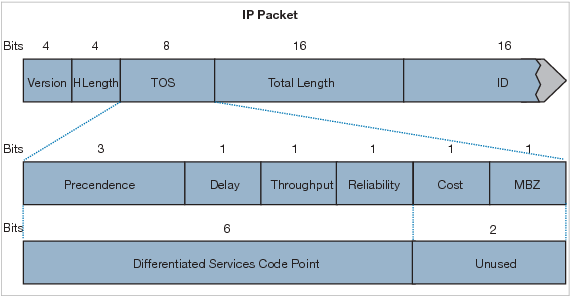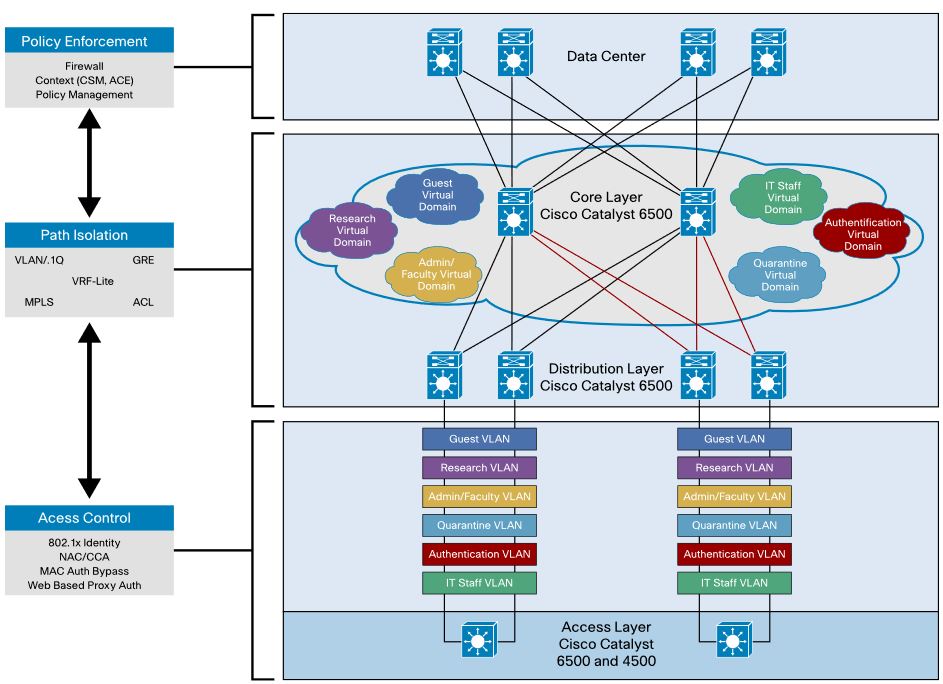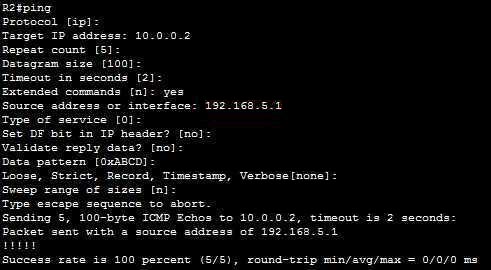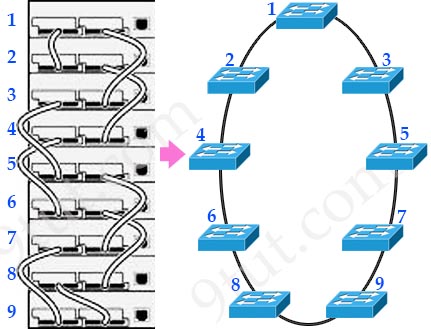Question 1
Question 2
Explanation
Cisco Express Forwarding (CEF) provides the ability to switch packets through a device in a very quick and efficient way while also keeping the load on the router’s processor low. CEF is made up of two different main components: the Forwarding Information Base (FIB) and the Adjacency Table. These are automatically updated at the same time as the routing table.
The Forwarding Information Base (FIB) contains destination reachability information as well as next hop information. This information is then used by the router to make forwarding decisions. The FIB allows for very efficient and easy lookups.
The adjacency table is tasked with maintaining the layer 2 next-hop information for the FIB.
Question 3
Explanation
A late collision is defined as any collision that occurs after the first 512 bits of the frame have been transmitted. The usual possible causes are full-duplex/half-duplex mismatch, exceeded Ethernet cable length limits, or defective hardware such as incorrect cabling, non-compliant number of hubs in the network, or a bad NIC.
Note: On an Ethernet connection, a duplex mismatch is a condition where two connected devices operate in different duplex modes, that is, one operates in half duplex while the other one operates in full duplex.
Question 4
Explanation
The following diagram illustrates the key difference between traffic policing and traffic shaping. Traffic policing propagates bursts. When the traffic rate reaches the configured maximum rate (or committed information rate), excess traffic is dropped (or remarked). The result is an output rate that appears as a saw-tooth with crests and troughs. In contrast to policing, traffic shaping retains excess packets in a queue and then schedules the excess for later transmission over increments of time. The result of traffic shaping is a smoothed packet output rate.

Note: Committed information rate (CIR): The minimum guaranteed data transfer rate agreed to by the routing device.
Question 5
Question 6
Question 7
Explanation
The IP datagram header contains an 8-bit field called ToS (Type of Service). The field has been part of the IP header since the beginning, but it was rarely used until the recent introduction of Differentiated Services (Diff-Serv).

Note:
+ CoS does not exists in an IP header. It appears in the header of a 802.1Q frame only. CoS is used for QoS on a trunk link.
+ DSCP uses the first 6 bits of the TOS field.
Question 8
Question 9
Explanation
The ping command first sends an echo request packet to an address, then waits for an echo reply. The ping is successful only if:
+ The echo request gets to the destination, and
+ The destination is able to get an echo reply back to the source within a predetermined time called a timeout. The default value of this timeout is two seconds on Cisco routers.
Question 10
Explanation
Network virtualization architecture has three main components:
+ Network access control and segmentation of classes of users: Users are authenticated and either allowed or denied into a logical partition. Users a
re segmented into employees, contractors and consultants, and guests, with respective access to IT assets. This component identifies users who are authorized to access the network and then places them into the appropriate logical partition.
+ Path isolation: Network isolation is preserved across the entire enterprise: from the edge to the campus to the WAN and back again. This component maintains traffic partitioned over a routed infrastructure and transports traffic over and between isolated partitions. The function of mapping isolated paths to VLANs and to virtual services is also performed in component.
+ Network Services virtualization: This component provides access to shared or dedicated network services such as security, quality of service (QoS), and address management (Dynamic Host Configuration Protocol [DHCP] and Domain Name System [DNS]). It also applies policy per partition and isolates application environments, if required.

Question 11
Explanation
There are many options to choose when using extended ping. Below shows the options that we can choose:

In which:
+ Repeat count [5]: Number of ping packets that are sent to the destination address. The default is 5 -> A is correct.
+ Source address or interface: The interface or IP address of the router to use as a source address for the probes -> B is correct.
For more information about extended ping, please read: http://www.cisco.com/c/en/us/support/docs/ip/routing-information-protocol-rip/13730-ext-ping-trace.html
Question 12
Explanation
We are not sure about this question. But below is information about the shadowed rule for your reference.
Shadowed Rule: These are rules that will never be executed because of improper access-list order. A shadowed rule occurs when a general rule precedes a specific one. For example, if the first rule that says “allow all outbound web traffic” and then a second rule (lie under the first rule) says “deny all outbound traffic to Google” the second rule will never be executed.
The following is a simple example of shadowed rules:
access-list acl permit ip 1.0.0.0 255.0.0.0 any
access-list acl permit ip 1.1.0.0 255.255.0.0 any
-> The second rule never matches.
Question 13
Explanation
The Resource Reservation Protocol (RSVP) protocol allows applications to reserve bandwidth for their data flows. It is used by a host, on the behalf of an application data flow, to request a specific amount of bandwidth from the network. RSVP is also used by the routers to forward bandwidth reservation requests.
Question 14
Explanation
Switch stacking technology allows the network engineer to make that stack of physical switches act like one switch. The stacking cables together make a ring between the switches. That is, the switches connect in series, with the last switch connecting again to the first.

Answer B is not correct as switch stacking is about connecting switches together so that they act as one switch, not about adding and removing hosts.
Answer C is not correct because switch stacking has nothing to do with performance of high-needs applications.
Surely switch stacking provides redundancy as stacking creates a ring of connection with two opposite paths. Whenever a frame is ready for transmission onto the path, a calculation is made to see which path has the most available bandwidth. The entire frame is then copied onto this half of the path.
With switch stacking, STP, CDP and VTP would run on one switch, not multiple switches. Also there would be one MAC address table, and it would reference all ports on all physical switches so we may say switch stacking has better resource usage. Also if we consider all stacking switches as one logical switch then surely the port density is increase very much. Therefore answer D is the most suitable one.